Christopher Hector ponders the question…
I do find it amazing, and disturbing, that I have to head to HorseTelex to find the breeding of the most popular sire in Westfalia! The stallion is Diamantenglanz who is by Diamond First (and yes, I had to consult HorseTelex again, Diamond First is well bred, by Diamond Hit out of a Fürst Heinrich mare, but his performance career is somewhat lacking, back in August 2021 he competed in two Preliminary Tests for a 7th and a 9th, since then???) Diamantenglanz is out of a Bon Coeur / For Compliment mare. Bon Coeur competed in seven small tour classes, winning two, in Wellington USA back in January/February 2020, and re-appearing in February 2023 for a 7th in a Prix St Georges.
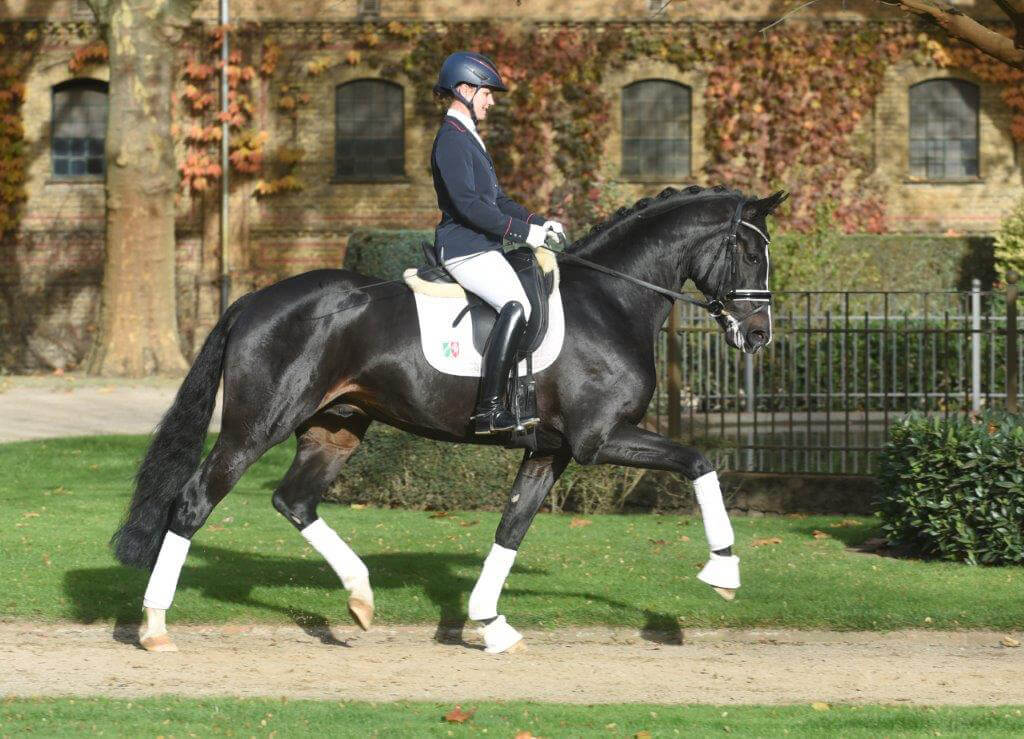
Diamantenglanz
Diamantenglanz was by far the most popular stallion, with 233 mares, although it ought be noted that his fee was an attractive €900 while the average fee was more like €1500, this in a time when horse breeding is in decline, with the number of Westfalien mares covered down 11.9% on the previous year.
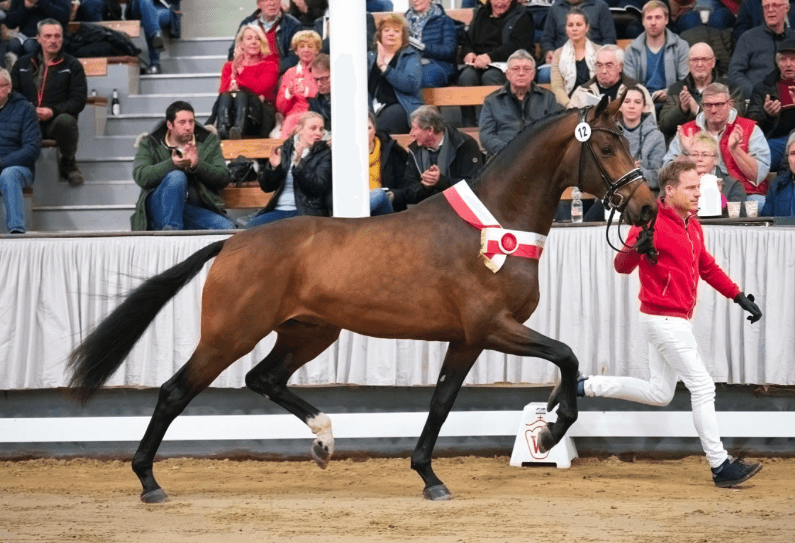
Escaneno
Second with 188 coverings was Escaneno (Escamillo / Veneno) and third, Glamdale (Glamourdale / Millennium) with 81.
It is a relief when we get to the fourth and fifth most popular stallions, because they are jumpers, and the jumping breeders look to performance, not fashion, when they choose the stallion for their mare. Fourth with 79 mares is the truly great Cornet Obolensky, fifth his exciting son, Comme il Faut. That’s breeding for the big sport, that’s real breeding.

Zoom
We should not be surprised, the trend to breed to unproven, but fashionable dressage stallions has been off-and-running for a while now. Back in 2019, the most popular Westfalien sire, was Zoom (Zack / Don Schufro), who may have Grand Prix top and bottom on his pedigree, but his performance has not reflected their success. Despite having the considerable advantage of Helen Langehanenberg in the saddle, Zoom’s only recorded appearance was at Verden in August 2021 where he was withdrawn in one Prix St Georges and placed 22nd in the other.
Vivat Rex
The most popular sire in 2020, was Vivat Rex by Vivaldi out of a Samarant / Rubinstein mare. HorseTelex suggests that he has competed at Novice level, but the station where he stands, Hengststation Rüscher-Kornermann makes not even this modest claim.
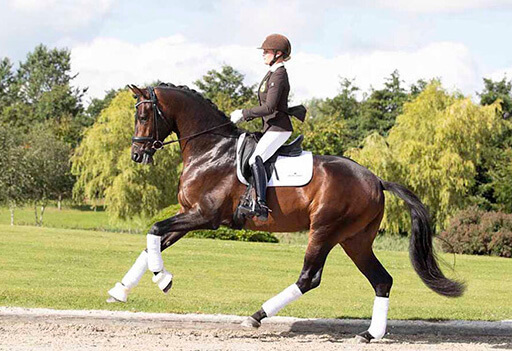
Dynamic Dream
Across the border, in Oldenburg, the situation is much the same. The most popular breeding stallion in 2022 was Dynamic Dream (Dream Boy / Sir Donnerhall) with 179 foals registered. Not only does Dynamic Dream have no performances to his credit, he has not even completed a performance test, because of injury. Dynamic Dream was also hugely popular in Scandinavia but it would seem his star is somewhat on the wane, I guess that’s one of the problems of being a fashionable stallion, fashionistas are fickle.
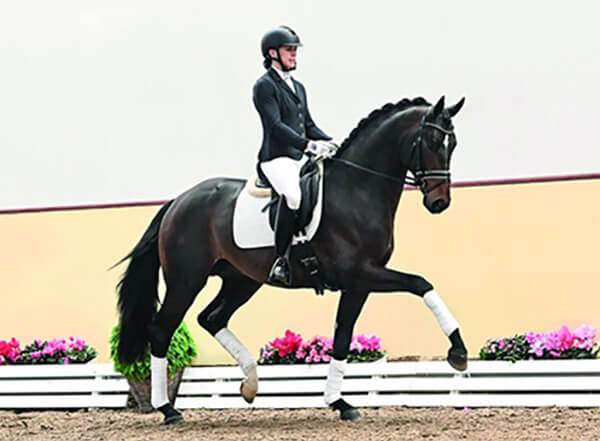
Escanto PS
In 2023, Escanto PS ranked number one in Oldenburg with 195 foals registered. Escanto PS is bred and owned by Paul Schockemöhle, indeed five to the top ten Oldenburg stallions are part of the Schockemöhle/Helgstrand mega-station. The stallion is by Escamillo out of a Fürstenball / Totilas mare. The four-year-old has competed Novice, hopefully he will go on to bigger things.
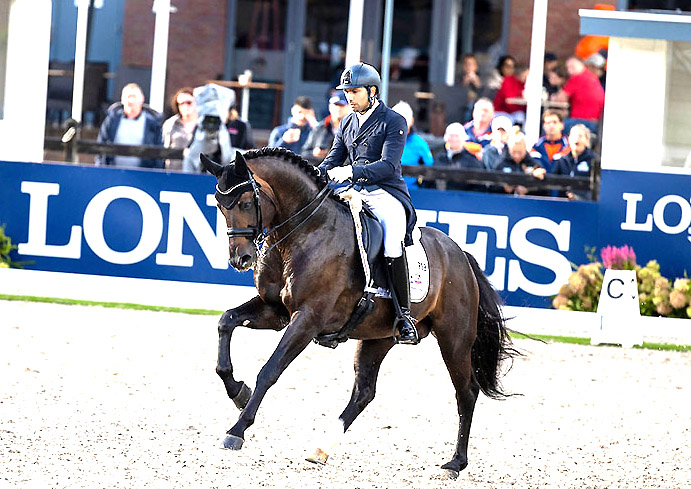
Escamillo, successful as a Young Horse, but since then?
Escamillo is by Escolar out of a Rohdiamant / De Niro mare, that’s Grand Prix times three, but so far he has not managed to reproduce their big tour success. He had his fifteen minutes of fame in September 2022 when he was third in the Seven Year Old Final in the Young Horse Championships at Ermelo. Since then?
Dynamic Dream comes second, with 193 foals, followed by Vitalis (133), Secret (101), the now gelded Fynch Hatton (78), Bonds (75), Va Bene (72), Escaneno (71), Vivaldos (69) and Morricone I (66) – there’s not a single Grand Prix horse in that lot. There are breeding stallions that compete successfully at Grand Prix, though it seems the Dutch breeders are more likely to use them than the Germans. The Breeding News top ten for 2024 runs, Glamourdale, Hermès, Franziskus, Dante Weltino, Blue Hors Saint Schufro, Jovian, Everdale and Total Hope. That’s an attractive enough group for the serious breeder…
Jens Meyer has spent a lifetime observing breeding trends, he started his working life at the Hanoverian State Station, Celle, then ran his own very successful stallion station before working with Blue Hors as a special advisor. Now he is back home in Dorum, content to breed a few of his own. Jens has long been critical of the trend to fashion breeding:
“To breed sport horses, that is the key, not to breed a pretty one, and after two years, you need another one! What’s that? Nothing, nothing!”
“I will give an example, when you say to a breeder, which stallion do you want to use for breeding, they say boom, boom, boom, three years old! And you say to them, which six or seven year old and suggest a few, and they say oh this one makes too big, this one too small, this one this, and that one that, and you have to get the idea out of their head that they have to breed a pretty foal. I say to them, I am proud to breed my foal from a six or seven-year-old stallion, I am breeding to produce a competition horse. This attitude of fashion breeding is a huge problem.”
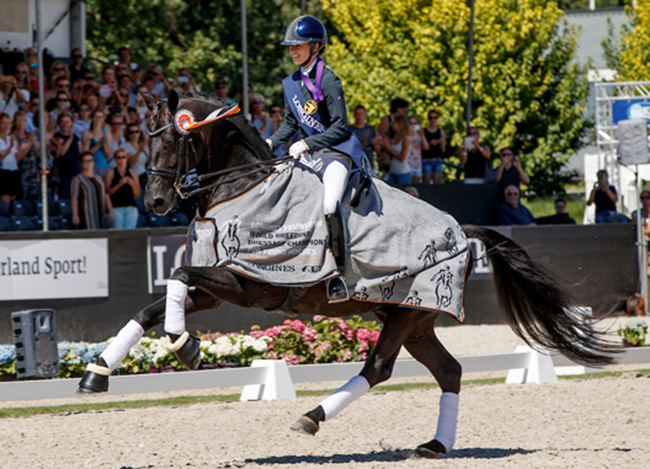
Glamourdale, a stallion for the future?
“I don’t breed so many foals any more, but when I do, we talk about European offspring, we don’t talk about Hanoverians or Oldenburger or whatever. I like very much the mix, we have the good back from the German horses, from the Dutch horses we get the good technique and the canter. I have used Glamourdale, this is a young Grand Prix stallion, the people talk about him, that he doesn’t produce type, blah blah, he’s not a refiner for sure, but he gives good conformation, healthy conformation and movement. I think he is a stallion for the future for the commercial mares.”
But if he isn’t producing pretty foals, why do they breed to him?
“Aah, he is a coming dressage stallion and how many stallions do they have in the sport, not many. I have a really good one by him, a two-year-old filly out of a Millennium mare, out of a good family, I am really interested to see how far she goes. So he can produce foals like this that are quite fashionable, they are uphill and they have power in the body. I hate it that people just talk about the problems with a stallion, never what they can get from the stallion.”
Just when did the breeders become fashionistas – and why?
There are a number of factors at work as I see it. Perhaps the biggest one is the advent of chilled and frozen semen. The mare owner was no longer restricted in his choice to stallions that stood in his district. He could take his choice from stallions all over the world, and they came attractively packaged with sophisticated advertising campaigns. There was also a demographic shift, the breeders were no longer farmers with just two or three mares and a traditional respect for the authority of the breed society leaders. More and more, the trend was to newcomers who brought a very different mindset to the business of breeding.
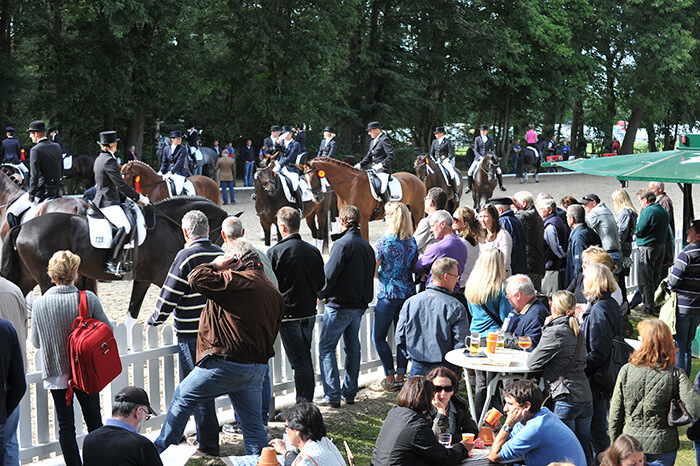
The crowd prepares for Presentation time at the Bundeschampionate
This was compounded by the increased emphasis on young horse classes, in particular the Bundeschampionate and the World Young Horse Championships. It meant that a stallion like Sandro Hit could cover thousands of mares without ever competing in an open age class.
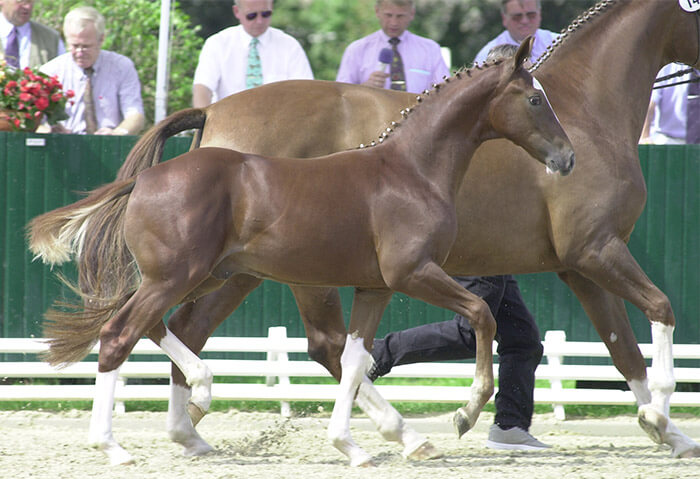
A major event, the Foal Auction
The trend intensified when breeders discovered that instead of breaking in and training the young horse, they could whisk the foal off to what became major events, the foal auctions – suddenly the hunt was on for stallions that could produce pretty foals with lots of flashy front leg action…
I must confess, I miss the traditional set-up of the stallion station and hotel, that was the heart of the local farming community when I first started to explore the breeding scene in Europe, those were the days my friends…



Morricone is a Grand Prix stallion..!
Not according to the FEI database… CH